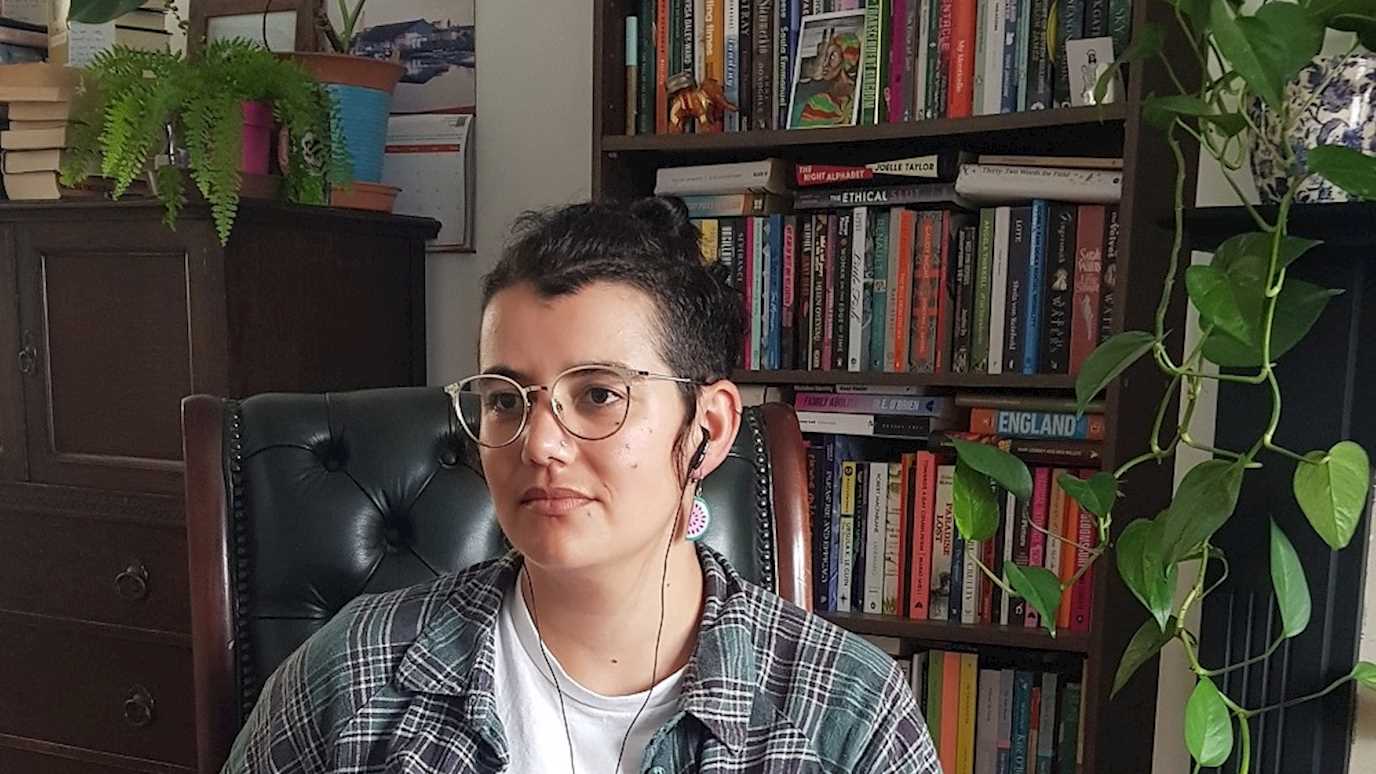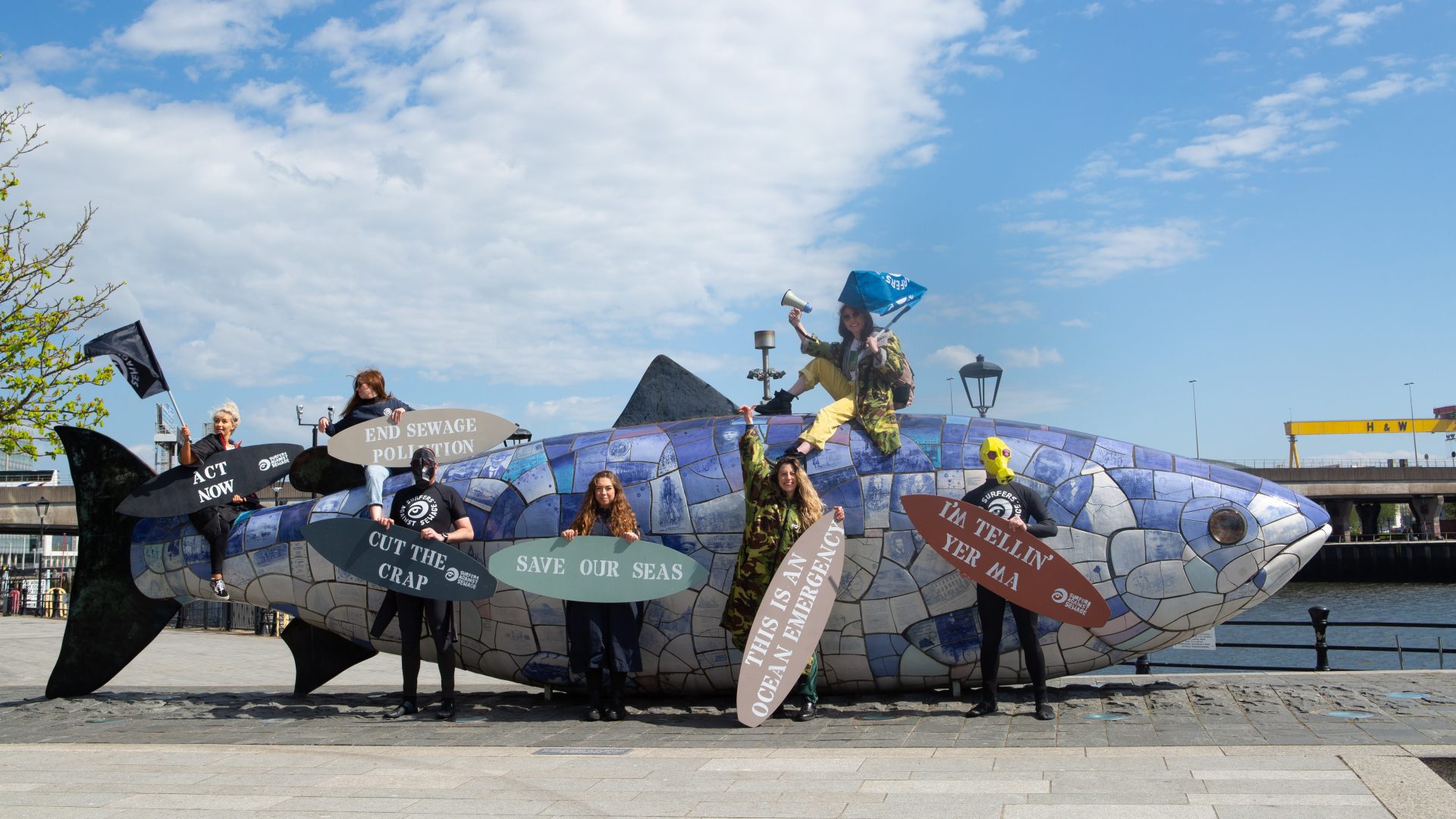Welcome to the first blog of the OHEM project, a space for the project team to mark and reflect on some of the key moments of the project soon after they happen, and share the trials and tribulations on the biggest oral history project that any of the team have ever been involved with.

Protestors at the Global Climate Strike, London in March 2019. Picture credit: Garry Knight
This month the project team met at its base at Royal Holloway for the first time. It was an exciting day, particularly for new members of staff (most of us) – new staff badges were picked up from security, keys collected for our project office, sharp pencils and pristine writing pads fetched from the stationary cupboard. And so the work began, starting out with a slightly trepidatious feeling as we listed all the things we had promised to deliver in our bid to the AHRC, much of it written nearly two years ago.
But for many in the team that day was also an ending – the completion of a long and sometimes tough and frustrating journey, which had started seven years before with a plan by environmentalists Chris Church and Jeremy Iles to map and record the history of the movement to enable today’s activists to understand their roots and – perhaps – to learn from what had gone before.
The original concept was much more modest – a limited number of interviews, a map of actions, and the development of a timeline to record UK environmental campaigns. Funding was hard to find, but others with an interest in the topic joined in to work on a revised bid – Barbara Brayshay, a geographer and director of Living Maps Networks with expertise in action research, and experienced oral historian Toby Butler.
The fortunes of the endeavor changed dramatically at a meeting with Rob Perks and Mary Stewart, the Curators who lead the oral history team at the British Library Sound Archive, and run the oral history fieldwork charity National Life Stories. They had long wanted more recordings covering the environmental movement for the national collection of oral histories, and encouraged us to think much more ambitiously in terms of scope, both geographically (nationwide) and interview length (to encompass whole-life history accounts, that would maximise their usefulness to the widest range of researchers in the future). And they also encouraged us to consider securing academic funding from the Arts and Humanities Research Council with an academic partner, which could much more adequately support the project with infrastructure and expertise, but with one caveat – it would take a long time, a minimum of 18 months.
The team looked for partners and found Felix Driver and Oli Mould at the Geography Department at Royal Holloway who felt the work was timely and important. The research was a good fit with the work of cultural and historical geographers in the college and their extensive experience of working in partnerships with national archives and collections. Furthermore the Global Futures: Culture and Creativity MSc programme could directly engage younger generations of students in the research process. They generously devoted days of time to the slow process of bid drafting, budget planning and approaching major partners began.
Chris and Jeremy had already built on their many links within the sector and 17 environmental groups had expressed support. Friends of the Earth came on board as a national partner, while the Director of the Wildlife Trusts and one of the founders of the Black Environment Network both agreed to join the Advisory Board. Within the movement itself there seemed to be widespread recognition of the need to move beyond sharing anecdotes of past campaigns to reflect more deeply on why the movement has developed from ‘Save the Whales’ and ‘Nuclear Power No Thanks’ to Extinction Rebellion and the multi-faceted climate change ‘uber-campaign’ that is being fought on so many fronts. It also became clear that the environmental movement seems to have some similarities and perhaps some important differences to other social movements in the UK and more widely. Learning how the movement has evolved into today’s complex organisational ecosystem from those involved is another challenge for the next three years.
Recording life stories was as attractive method for doing so, involving relatively little time for interviewees compared to, say, writing a memoir. Multi-media could present a range of opportunities for younger generations to hear and gain insights from personal testimony of the many victories and defeats along the way.
By engaging with a wide range of generations, we believe that a richer collective memory of contemporary environmental activism might be developed and shared, to provoke wider discussion within and beyond the environmental sector. Central to this will be the free public outputs from the project such as witness seminars, podcasts, an edited book compiled from the interviews and the interview transcripts and recordings themselves, which will be available to all online via the British Library. Sharing that learning with children and young people will be an important part of the work and the Royal Geographical Society with its expertise in developing resources for schools were keen to join the work to lead on the development of educational materials drawing on the interview recordings.
Slowly a clear set of objectives emerged, along with the parameters – 50 years of campaigning history from 1970 onwards, working across all four UK nations. Over 100 interviews would be done with the initiators and influencers, but also with the less obvious voices – the story of a city farm worker in inner-city Sheffield may say just as much about the ‘movement’ as that of a Westminster-focused lobbyist or someone lashed to a tree in the path of the M11. The vision delivered a plan, and the plan became the bid, and then it did indeed take more than 18 months to secure the funding for the project from the AHRC.
So here we are in month one, but as you can see, it has been a very long journey with the involvement of a wide range of people and partners, many from the movement itself. And unusually, the research and project delivery team is made up of both academic staff and people from the environmental sector itself (Chris and Jeremy, who have over 60 years of experience in environmentalism between them). All team members will also be trained and involved in interviewing, whatever their role, so everyone working on the project has a deep understanding of the life-story interview process and the project can benefit directly from the fullest range of experience.
And this is the start, not the end of involving the environmental movement itself in the process. Over the first year of the project we will be engaging directly with individuals and groups in different spheres of the sector, to help us develop our interviewee criteria, core interview questions and enable us to reach the widest range of experience we can.
























